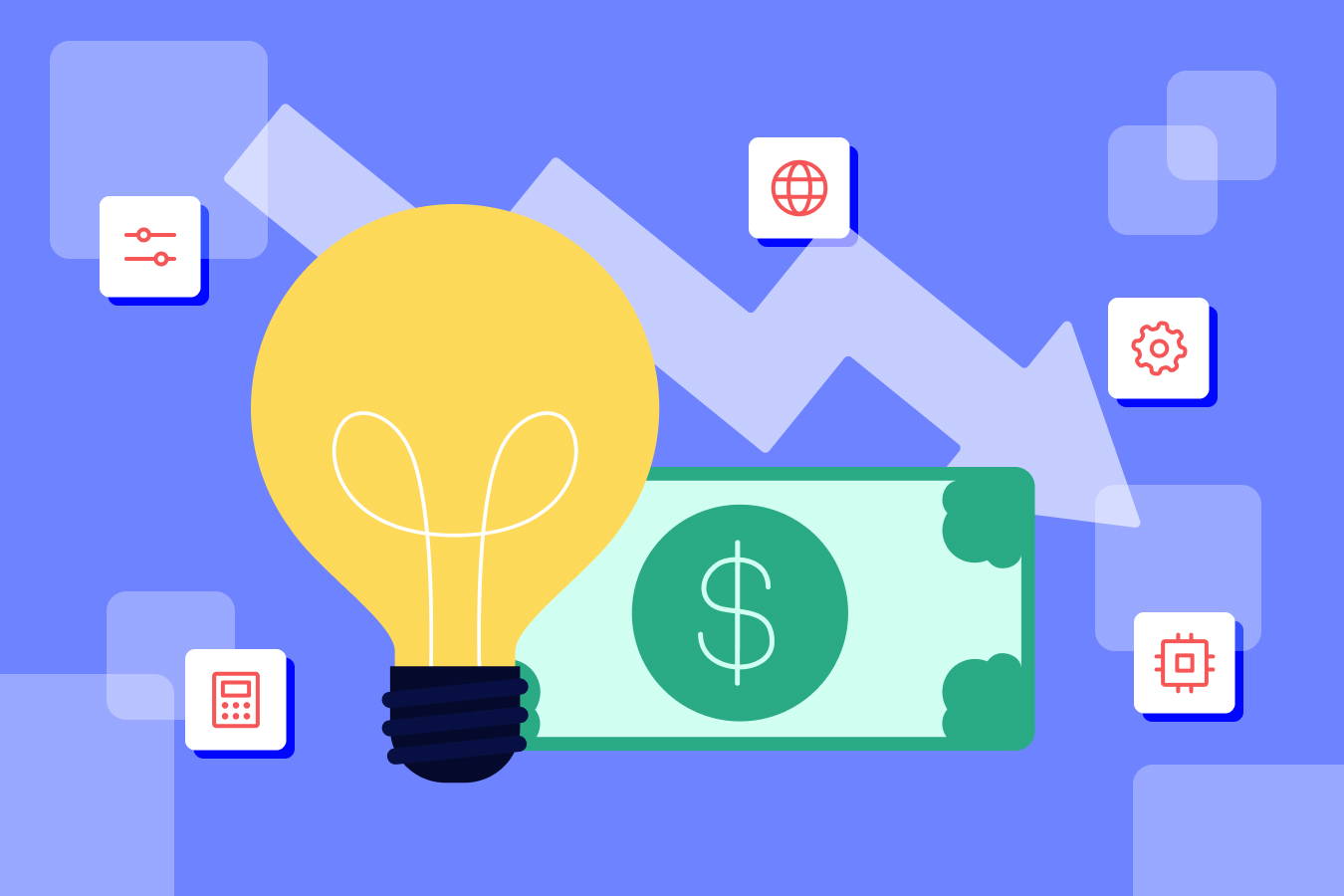Contents
As a comprehensive cloud computing platform for businesses, Amazon Web Services (AWS) offers an assortment of services for managing their data infrastructures as they grow and expand. As a result of its breadth of services, you have several options to optimize your costs by using an elastic approach.
Some users, however, find it difficult to control their expenditures due to a variety of causes. AWS operational costs can seem daunting when you are trying to understand how to reduce them. Workload, instances, performance, and expenditures have to be constantly monitored, analyzed, and tracked. You will learn tips to help you reduce AWS costs in this article.
Using AWS, companies can reduce AWS bills, boost performance, and manage capacity effectively. Through the various pricing and billing models, users can improve their economic structure. While AWS is widely used, optimizing costs can be difficult for many organizations. That’s what AWS consulting services are for.
The article aims to look at the process of planning and making decisions about AWS costs. You must understand how the pricing models work to reduce your AWS costs.
AWS Price Reduction: When to Consider It
It is estimated that $14.1 billion has been wasted in 2019 on unnecessary AWS expenses. AWS cost optimization is important when your bill grows 2–3 times higher than anticipated – especially if you are working with a strict budget.
Find out if your current expenses have increased by analyzing your current costs with an AWS Cost Management tool. Wouldn’t it be nice to save money and put that money towards promoting or improving your business? Getting a feel for the AWS pricing system might appear complex, so keep reading to grasp the basics and start on the path to a more affordable AWS bill.
10 Tips to Reduce Your AWS Costs
Discover the costs of the AWS services you consume before undertaking any actions to reduce costs. Customers can try AWS services free of charge up to specified limits for each service under the AWS Free Tier. Here is how to find out if you are over the free tier limit.
Then you can view and analyze your AWS costs and usage utilizing AWS Cost Explorer. You can use this tool to visually monitor cost and usage at a high level (e.g. AWS accounts, AWS services), or on a resource-by-resource basis (e.g. EC2 instance ID). Use the “Monthly costs by linked account report” to identify the top accounts where you incur costs. Determine which services contribute most to costs within each of those accounts. Using the “Monthly costs by service report” will allow you to do this. Filter and identify the top resources incurring costs using the hourly and resource level granularity.

After reviewing your AWS usage and costs, you should have a good idea of what they are. Here are 10 tactical ways to reduce AWS costs using existing AWS tools.
Moreover, consider reviewing AWS Security Consulting Services.
1. Shut down any unused EC2 instances you have
First, let’s look at how to reduce AWS costs. Even if you stop an instance, but do not terminate it, your EBS costs will still be incurred, since the volume is still stored. When you terminate EC2 instances, you will also terminate EC2 and EBS expenses. The same applies to other instance types, e.g., Elastic Cache.
2. Minimize oversized instances and volumes

Making these decisions requires an analysis of your metrics. Data from the short-term should not be relied upon. A month of data should be sufficient, however, please make sure you also check for seasonal peaks. Another important point to note is that EBS volumes cannot be reduced. Therefore, it will be necessary to create a new volume of the appropriate size and copy the data from the old one.
3. Use private IPs
Even if your instances are in the same availability zone, when you use a public IP inside of the AWS EC2 network, you’ll be charged Intra-Regional Data Transfer fees. You will have the same problem if you use Elastic IP addresses or Elastic Load Balancers.
4. Take a snapshot and delete low-used Amazon EBS volumes
During seven days, EBS volumes that have very low activity (less than 1 IOPS per day) indicate that they are inactive. Use the Trusted Advisor Underutilized Amazon EBS Volumes Check to identify these volumes. Delete the volumes after taking a snapshot of them (in case you require them later). With Amazon Data Lifecycle Manager, snapshots can be automatically created.
5. Plan for AWS Savings
You can make a one- or three-year commitment for EC2 and Fargate if your business is stable and you’re pretty sure about your resource requirements. The agreed usage amount will then be discounted by 30%+. All items exceeding the limit will be charged at the usual on-demand prices.
6. Utilize Reserved Instances (RI) to reduce RDS, Redshift, ElastiCache, and Elasticsearch expenses
Get up to 42% off on-demand pricing with one year, no upfront RIs. The AWS Cost Explorer RI provides purchase recommendations based on your usage of RDS, Redshift, ElastiCache, and Elasticsearch. The parameters should be adjusted to 1 year, with no payment upfront. The break-even point typically occurs between seven and nine months for a one-year commitment.
7. Purchase reserved EC2 Instances on the AWS Marketplace
AWS Marketplace allows you to purchase reserved instances. Although this can give you even greater savings, it can also be challenging to find an instance with the right type, zone, and reserved period remaining. You still have the option to change the availability zone after purchasing the instance, which offers more choices.
8. Utilize Amazon EC2 Spot instances to cut EC2 costs
By using Spot instances, you can reduce costs by as much as 90% if you have a fault-tolerant workload. Examples of typical workloads include big data, containerized workloads, CI/CD, web servers, high-performance computing (HPC), and others. EC2 Auto Scaling allows you to launch both spot and on-demand instances to meet your target capacity. In Auto Scaling, Spot instances are automatically requested and a target capacity is attempted even if you interrupt the Spot instances.
9. Configure AWS autoscaling
Instances that don’t get used most of the time can save you money by having autoscaling configured correctly. In no time at all, you can automate instance starts and stops by setting up triggers, and you can even scale instances vertically and horizontally by using autoscaling. One of the applications of spot instances is autoscaling.
Thoroughly outlined in the case study of Openware.
10. Select availability zones and regions

The cost of AWS varies by region. As well as that, data transfers between availability zones are charged an additional fee. For this reason, you should centralize your operations and use single availability zones if you wonder how to reduce data transfer cost AWS.
Our case studies on AWS: Mriyar, Handy AI, Excelsior, Openware.
Conclusion
Regular monitoring and checkups are part of the AWS cost savings. Additionally, cost optimization is a challenging procedure that requires patience, knowledge, and expertise.
You can contact IT Outposts with any questions. With experience in DevOps, Infrastructure, and Architecture Design, MVP Scaling Services, and Infrastructure Migration Services, we are a provider of reliable DevOps services.

I am an IT professional with over 10 years of experience. My career trajectory is closely tied to strategic business development, sales expansion, and the structuring of marketing strategies.
Throughout my journey, I have successfully executed and applied numerous strategic approaches that have driven business growth and fortified competitive positions. An integral part of my experience lies in effective business process management, which, in turn, facilitated the adept coordination of cross-functional teams and the attainment of remarkable outcomes.
I take pride in my contributions to the IT sector’s advancement and look forward to exchanging experiences and ideas with professionals who share my passion for innovation and success.